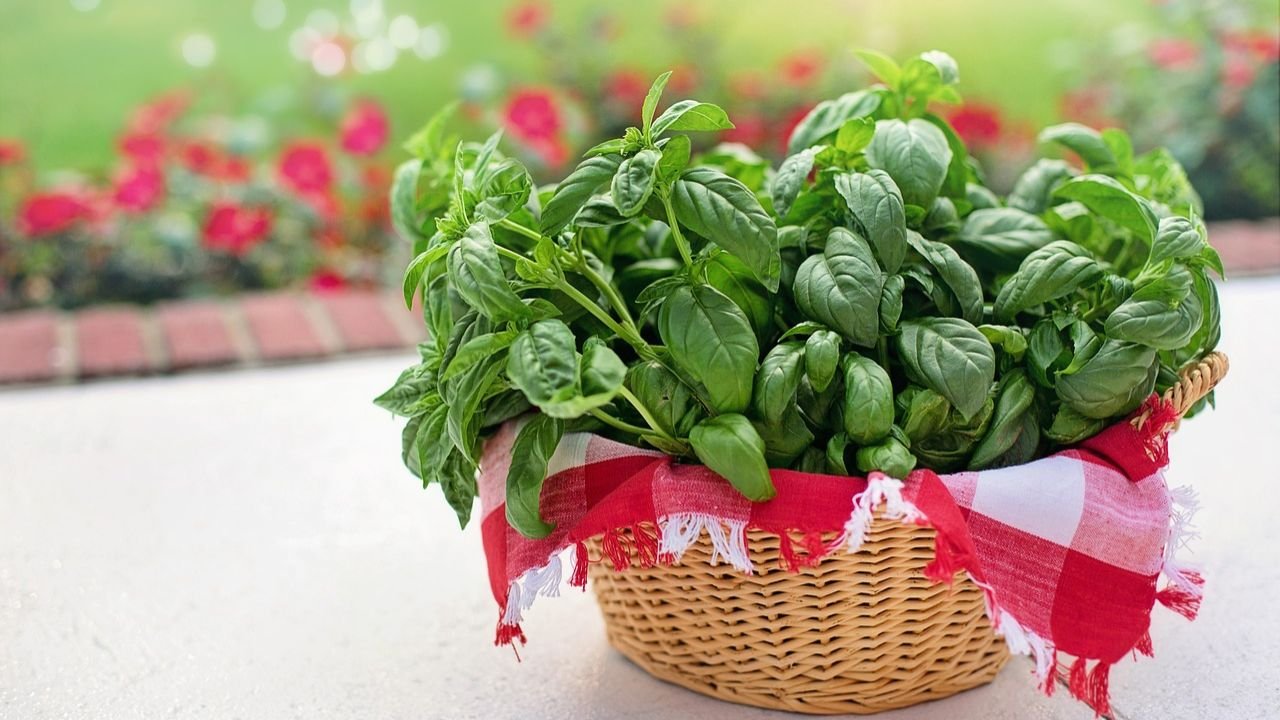
There are many varieties of basil. It is relatively easy to grow it at home. You can plant it both indoors and outdoors. Let’s know some step-by-step methods of how to grow it:
Before growing basil, you need to know which variety of basil you need. As we know that there are many varieties of basil like sweet basil, Thai basil or purple basil. Each variety has its own properties and benefits, so you need to choose the right variety of basil according to your needs. Once you choose the right variety of basil according to your needs, bring it from a nursery near your home.
quick list of Basil
| Scientific name | Ocimum basilicum |
| Synonyms | Sweet Basil |
| Family | Lamiaceae (Mint family) |
| Common name | Basil |
| Habit | Perennial shrub |
| Sunlight | prefer full sunlight |
| Plant part use | Mostly leaf |
| Habitat | Native to the Indian subcontinent and southeast Asia |
| Plant height | up to 75 cm tall |
| Cultivation | commonly cultivated in a garden |
| Soil | Well-drained fertile soil |
1. Basil can be grown both from seeds and plants. To grow basil seeds, sow them a few months before the winter or after the winter is over as basil cannot tolerate much cold. Plant the seeds at a depth of about 1/4 inch and keep the soil constantly moist. If you want to plant its saplings, you can plant it directly in your garden or pot.
2. Make sure the soil you are planting it in is well-drained soil with plenty of organic matter. Make sure the pot or container you are planting it in has drainage holes so that it does not get waterlogged. It should be planted in loamy soil with a pH between 6.0 and 7.0.
3. Basil needs full sun to grow, so make sure it gets 6-8 hours of direct sunlight per day. Indoors, keep it near a sunny window. Keep the temperature around it between 65-75°F (18-24°C). Keep its soil constantly moist but do not let it get waterlogged.
4. Fertilize basil every 4-6 weeks. Do not over-fertilize, as this can lead to excessive growth of leaves and reduced taste.
5. Cut the upper leaves regularly to encourage bushy growth and prevent the plant from flowering. Once it starts flowering, the leaves can become bitter. Harvest the leaves and take the larger leaves from the bottom of the plant. This promotes continued growth.
6. Tulsi plants can get infested with insects very quickly and fungal infections can occur. To prevent this, keep the plants in a well-ventilated place. If needed, you can use a mild insecticide.
By following all these steps, you can easily grow Tulsi plant at home and use fresh leaves in your dishes.
Remember, before starting any new wellness regimen, it’s always best to consult with a healthcare professional to ensure it is suitable for your specific needs and circumstances.